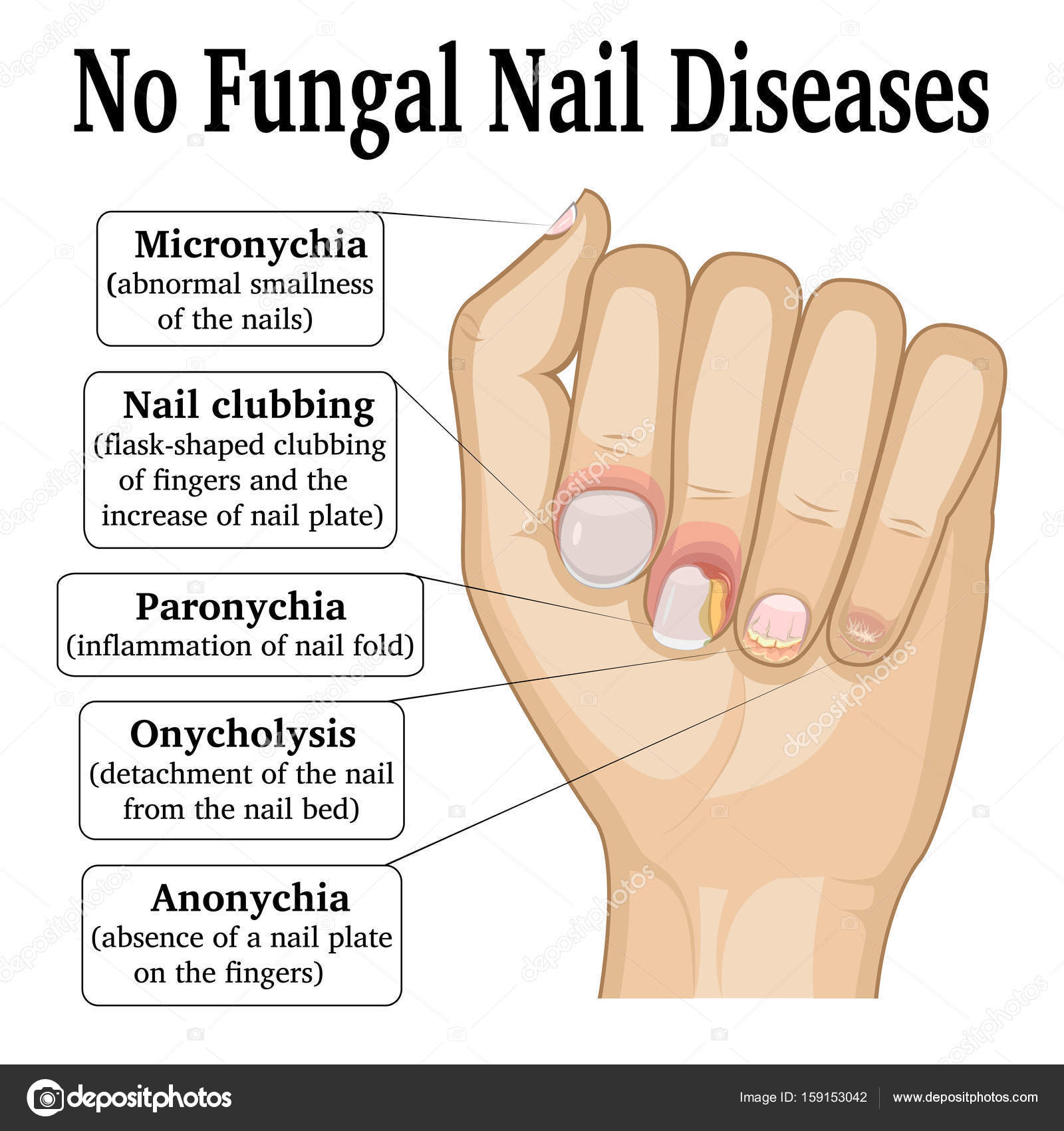Fungal infection in the nail bed. Fungal Nail Infections: Causes, Symptoms, and Effective Treatments
What are the main causes of fungal nail infections. How can you recognize the symptoms of onychomycosis. What are the most effective treatments for nail fungus. How can you prevent fungal nail infections.
Understanding Fungal Nail Infections: An In-Depth Look
Fungal nail infections, medically known as onychomycosis or tinea unguium, are common conditions affecting both fingernails and toenails. These infections occur when fungi overgrow in, under, or on the nail, leading to various symptoms and potential complications if left untreated.
Fungi thrive in warm, moist environments, making our nails particularly susceptible to infection. The same fungi responsible for other common conditions like athlete’s foot, jock itch, and ringworm can also cause nail infections.
Types of Fungal Nail Infections
- Distal subungual infection
- White superficial infection
- Proximal subungual infection
- Candida infection
Each type of infection presents with unique characteristics and affects different parts of the nail. Understanding these distinctions can help in proper diagnosis and treatment.
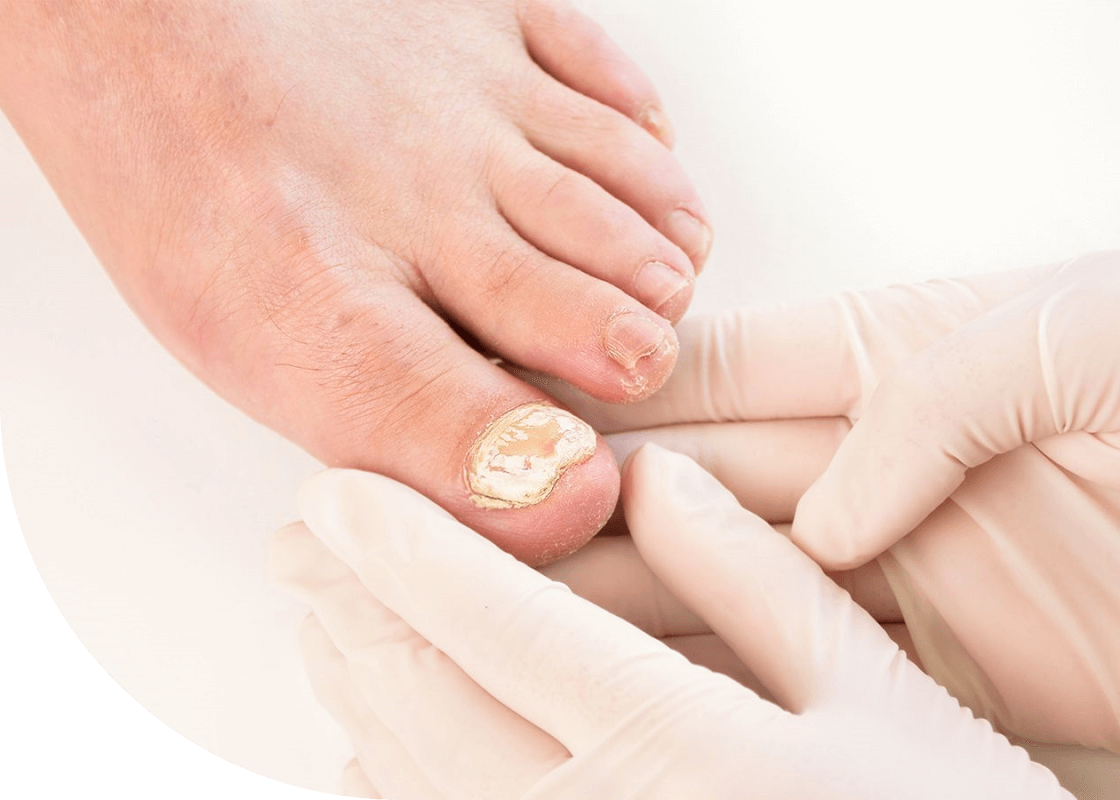
Common Causes and Risk Factors for Fungal Nail Infections
Fungal nail infections can develop due to various factors. While some causes are preventable, certain risk factors increase the likelihood of developing an infection.
Primary Causes of Fungal Nail Infections
- Exposure to fungi in warm, moist environments
- Contact with infected individuals
- Use of unsanitized nail care tools
- Existing fungal infections on other parts of the body
Risk Factors for Developing Fungal Nail Infections
- Age (over 65 years)
- Diabetes
- Poor circulation
- Weakened immune system
- Frequent exposure to water
- Wearing artificial nails
- Nail or skin injuries
- Wearing closed-toe shoes for extended periods
Are certain individuals more prone to fungal nail infections? Yes, men are generally more susceptible than women, and adults are more likely to develop infections compared to children. Additionally, those with a family history of fungal nail infections may have a higher risk.
Recognizing the Symptoms of Fungal Nail Infections
Identifying a fungal nail infection early can lead to more effective treatment. However, symptoms often develop gradually, making initial changes subtle and easy to overlook.
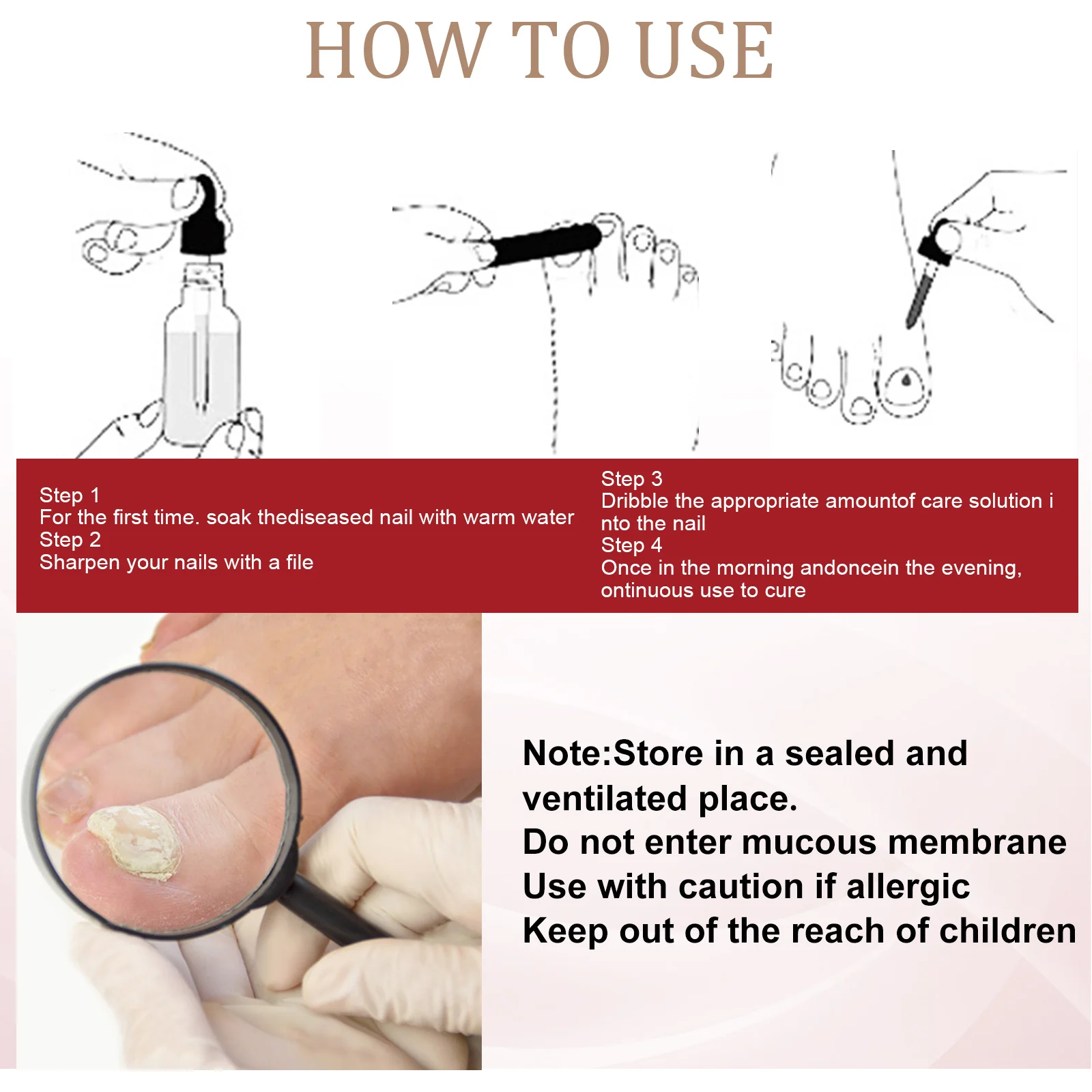
Common Signs of Fungal Nail Infections
- Distorted nail shape
- Nail lifting from the nail bed
- Unpleasant odor
- Brittle or thickened nail
- Discoloration (white, yellow, or brown)
- Streaks or spots on the nail
How do symptoms vary between different types of fungal nail infections? Each type of infection presents with unique characteristics:
Distal Subungual Infection
This most common type affects both fingernails and toenails. The outer edge of the nail becomes jagged with white or yellow streaks across the nail. The infection invades the nail bed and underside of the nail.
White Superficial Infection
Primarily affecting toenails, this infection creates well-defined white spots on the nail’s surface. Over time, these spots may cover the entire nail, making it rough, soft, and prone to crumbling.
Proximal Subungual Infection
Less common but affecting both fingernails and toenails, this infection causes yellow spots to appear at the base of the nail, spreading upward. It’s more prevalent in individuals with compromised immune systems.

Candida Infection
Caused by Candida yeasts, this infection typically affects fingernails, especially in people who frequently immerse their hands in water. It often occurs in nails previously damaged by injury or infection.
Effective Treatment Options for Fungal Nail Infections
Treating fungal nail infections can be challenging, often requiring patience and consistency. The choice of treatment depends on the type and severity of the infection.
Topical Treatments
- Antifungal nail polishes
- Antifungal creams and ointments
- Medicated nail lacquers
How effective are topical treatments for fungal nail infections? While convenient, topical treatments may have limited effectiveness, especially for severe infections or those affecting the nail bed. They often require prolonged use and may be most suitable for mild to moderate cases.
Oral Antifungal Medications
- Terbinafine
- Itraconazole
- Fluconazole
Oral medications are generally more effective than topical treatments, especially for severe infections. However, they may come with potential side effects and require careful monitoring by a healthcare provider.

Combination Therapies
Combining oral and topical treatments can enhance effectiveness and potentially reduce treatment duration. Your healthcare provider can recommend the most suitable combination based on your specific case.
Surgical and Other Interventions
- Nail removal
- Laser therapy
- Photodynamic therapy
In severe cases or when other treatments fail, surgical removal of the infected nail or advanced therapies like laser treatment may be considered.
Preventing Fungal Nail Infections: Practical Tips and Strategies
While not all cases of fungal nail infections are preventable, adopting certain habits and practices can significantly reduce your risk.
Personal Hygiene Practices
- Keep nails clean and dry
- Wash hands and feet regularly
- Dry thoroughly, especially between toes
- Trim nails straight across and file down thickened areas
Footwear and Sock Choices
- Wear breathable shoes
- Alternate shoes daily to allow them to dry
- Choose moisture-wicking socks
- Avoid going barefoot in public areas
Nail Care Precautions
- Disinfect nail care tools regularly
- Avoid sharing nail care items
- Be cautious when getting manicures or pedicures
- Consider using antifungal sprays or powders in shoes
How can you protect yourself when visiting nail salons? Always ensure the salon follows proper sanitation procedures. Don’t hesitate to ask about their disinfection practices and consider bringing your own tools if you’re unsure.
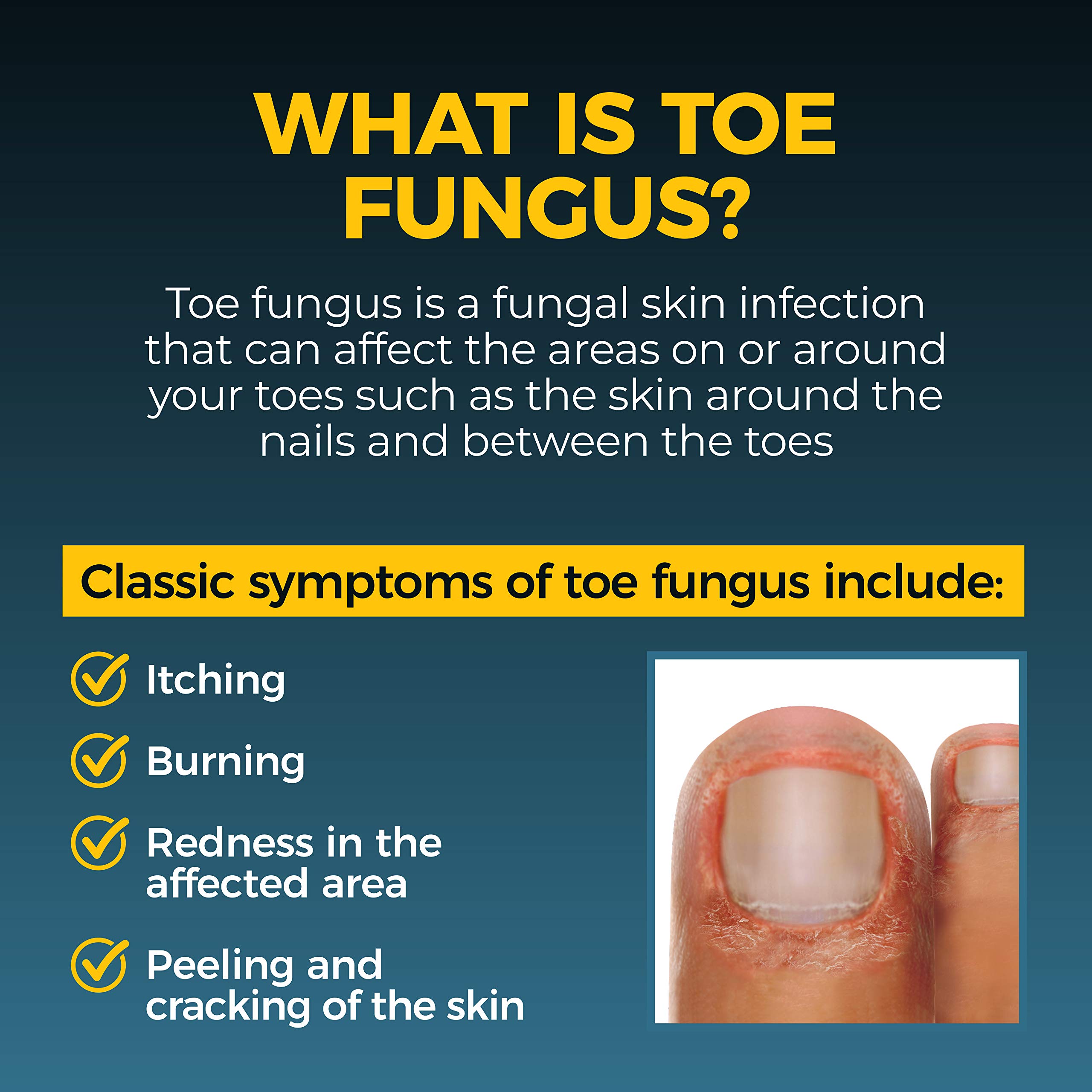
The Impact of Fungal Nail Infections on Overall Health
While often considered a cosmetic issue, fungal nail infections can have broader implications for overall health, especially in certain populations.
Complications and Associated Risks
- Spread of infection to other nails or body parts
- Increased risk of bacterial infections
- Pain and discomfort affecting daily activities
- Psychological impact due to appearance concerns
For individuals with diabetes or compromised immune systems, fungal nail infections can pose more serious risks. These populations should seek prompt medical attention if they suspect an infection.
Long-term Effects of Untreated Infections
If left untreated, fungal nail infections can lead to permanent nail damage, recurrent infections, and potential spread to surrounding skin. In severe cases, they may cause pain and difficulty walking or using affected fingers.
Emerging Research and Future Treatments for Fungal Nail Infections
The field of fungal nail infection treatment is continuously evolving, with ongoing research into more effective and convenient therapies.

Nanotechnology in Antifungal Treatments
Researchers are exploring the use of nanoparticles to enhance the delivery and effectiveness of antifungal agents. This approach could potentially improve penetration into the nail and increase treatment efficacy.
Novel Drug Delivery Systems
New methods of drug delivery, such as transungual (through the nail) systems, are being developed to improve the efficacy of topical treatments. These innovations aim to enhance drug penetration and reduce treatment duration.
Natural and Alternative Remedies
There’s growing interest in natural antifungal agents, such as essential oils and plant extracts. While more research is needed, some of these alternatives show promising results in preliminary studies.
What potential breakthroughs can we expect in fungal nail infection treatment? Future treatments may include combination therapies that target multiple aspects of fungal growth, personalized treatment plans based on genetic factors, and advanced diagnostic tools for earlier detection and more precise treatment.

As research progresses, we may see more effective, shorter-duration treatments with fewer side effects, making fungal nail infections easier to manage and less likely to recur.
Fungal Nail Infection: Overview, Causes & Treatments
We include products we think are useful for our readers. If you buy through links on this page, we may earn a small commission Here’s our process.
Healthline only shows you brands and products that we stand behind.
Our team thoroughly researches and evaluates the recommendations we make on our site. To establish that the product manufacturers addressed safety and efficacy standards, we:
- Evaluate ingredients and composition: Do they have the potential to cause harm?
- Fact-check all health claims: Do they align with the current body of scientific evidence?
- Assess the brand: Does it operate with integrity and adhere to industry best practices?
We do the research so you can find trusted products for your health and wellness.
Read more about our vetting process.
Was this helpful?
Fungal nail infections are common and are caused by fungi that live in the environment. They enter through small cracks in your nail or the nearby skin, causing infection.
They enter through small cracks in your nail or the nearby skin, causing infection.
Fungal infections can affect any part of the body. Fungi are normally present in and on the body alongside various bacteria. But when a fungus begins to overgrow, you can get an infection.
Onychomycosis, also called tinea unguium, is a fungal infection that affects either the fingernails or toenails. Fungal infections normally develop over time, so any immediate difference in the way your nail looks or feels may be too subtle to notice at first.
A fungal nail infection occurs from the overgrowth of fungi in, under, or on the nail. Fungi thrive in warm, moist environments, so this type of environment can cause them to naturally overpopulate. The same fungi that cause jock itch, athlete’s foot, and ringworm can cause nail infections.
Fungi that are already present in or on your body can cause nail infections. If you have come in contact with someone else who has a fungal infection, you may have contracted it as well.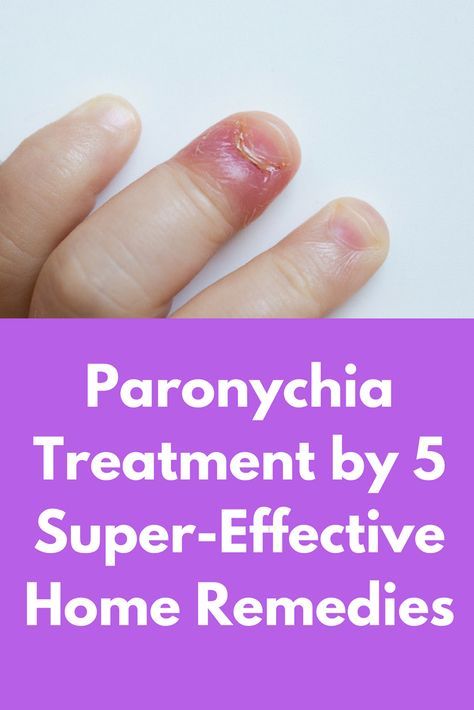 Fungal infections affect toenails more commonly than fingernails, likely because your toes are usually confined to shoes, where they’re in a warm, moist environment.
Fungal infections affect toenails more commonly than fingernails, likely because your toes are usually confined to shoes, where they’re in a warm, moist environment.
If you get a manicure or pedicure at a nail salon, be sure to ask how the staff disinfects their tools and how often they do it. Tools, such as emery boards and nail clippers, can spread fungal infections from person to person if they’re not sanitized.
There are many different causes of fungal nail infections. Each cause has a treatment of its own. Although many of the causes of a fungal nail infection are preventable, some risk factors increase the likelihood of developing one. You’re more likely to develop a fungal nail infection if you:
- have diabetes
- have a disease that causes poor circulation
- are over age 65
- wear artificial nails
- swim in a public swimming pool
- have a nail injury
- have a skin injury around the nail
- have moist fingers or toes for an extended time
- have a weakened immune system
- wear closed-toe shoes, such as tennis shoes or boots
Nail infections occur more often in men than in women, and the infections are found in adults more often than in children.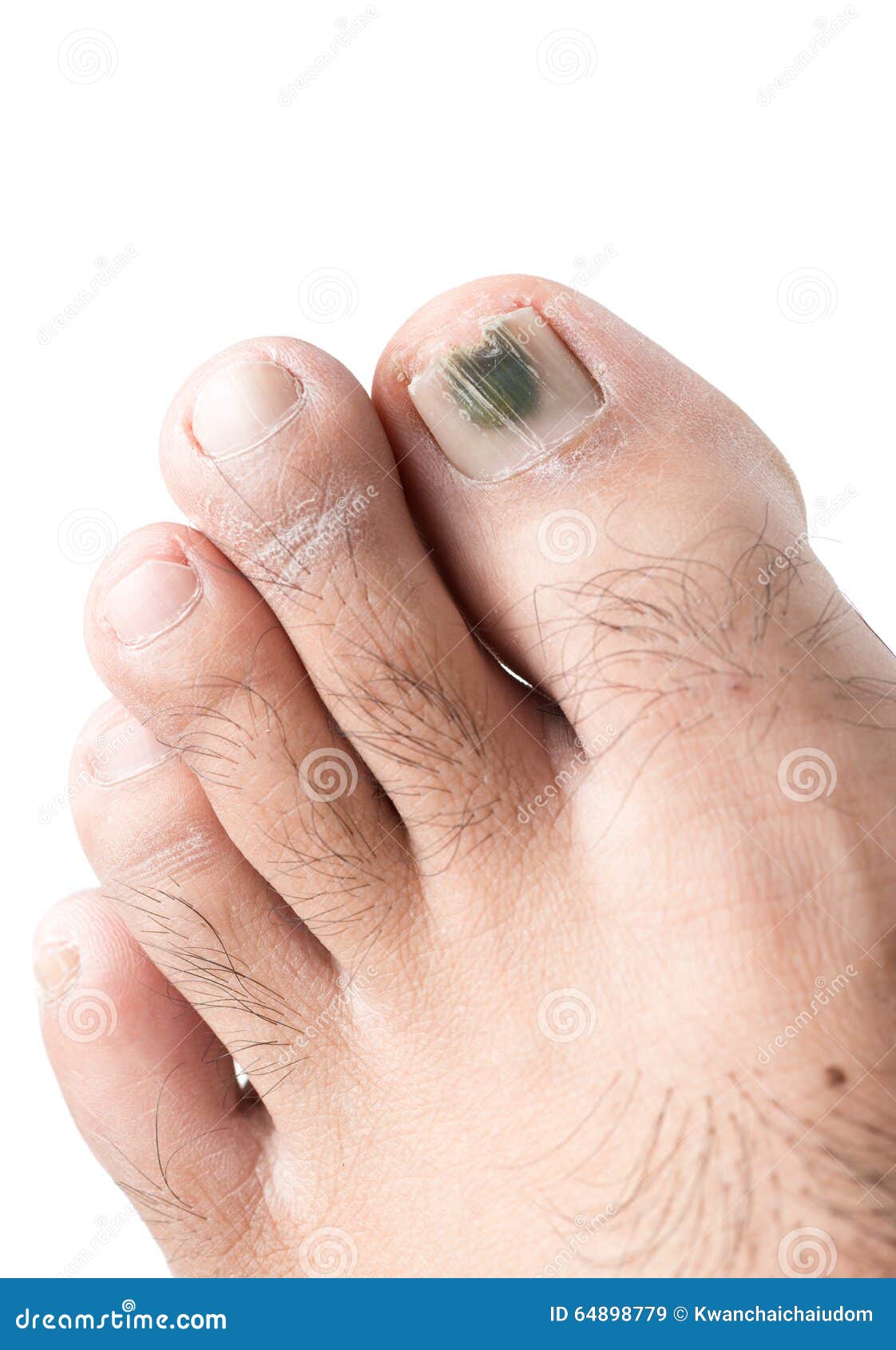 If you have family members who often get these types of fungal infections, you’re more likely to get them as well.
If you have family members who often get these types of fungal infections, you’re more likely to get them as well.
Older adults have a high risk for getting fungal nail infections because they have poorer circulation. The nails also grow more slowly and thicken as we age.
A fungal infection of the nail may affect part of the nail, the entire nail, or several nails.
Common signs of a fungal nail infection include:
- a distorted nail that may lift off from the nail bed
- an odor coming from the infected nail
- a brittle or thickened nail
Distal subungual infection
Distal subungual infections are the most common type of fungal nail infection and can develop in both fingernails and toenails. When infected, the outer edge of the nail has a jagged appearance with white and/or yellow streaks across the nail.
The infection invades the nail bed and underside of the nail.
White superficial infection
White superficial infections usually affect toenails. A certain type of fungus attacks the top layers of the nail and creates well-defined white spots on the nail.
A certain type of fungus attacks the top layers of the nail and creates well-defined white spots on the nail.
Eventually these white patches cover the entire nail, which becomes rough, soft, and prone to crumbling. Spots on nail may become pitted and flaky.
Proximal subungual infection
Proximal subungual infections are uncommon but can affect both fingernails and toenails. Yellow spots appear at the base of the nail as the infection spreads upward.
This infection can commonly occur in people with compromised immune systems. It can also result from minor injury to the nail.
Candida infection
Candida yeasts cause this type of infection. It can invade nails previously damaged by a prior infection or injury. More commonly, Candida affects fingernails. It often occurs in people who frequently soak their hands in water.
These infections usually start by the cuticle around the nail, which becomes swollen, red, and tender to the touch.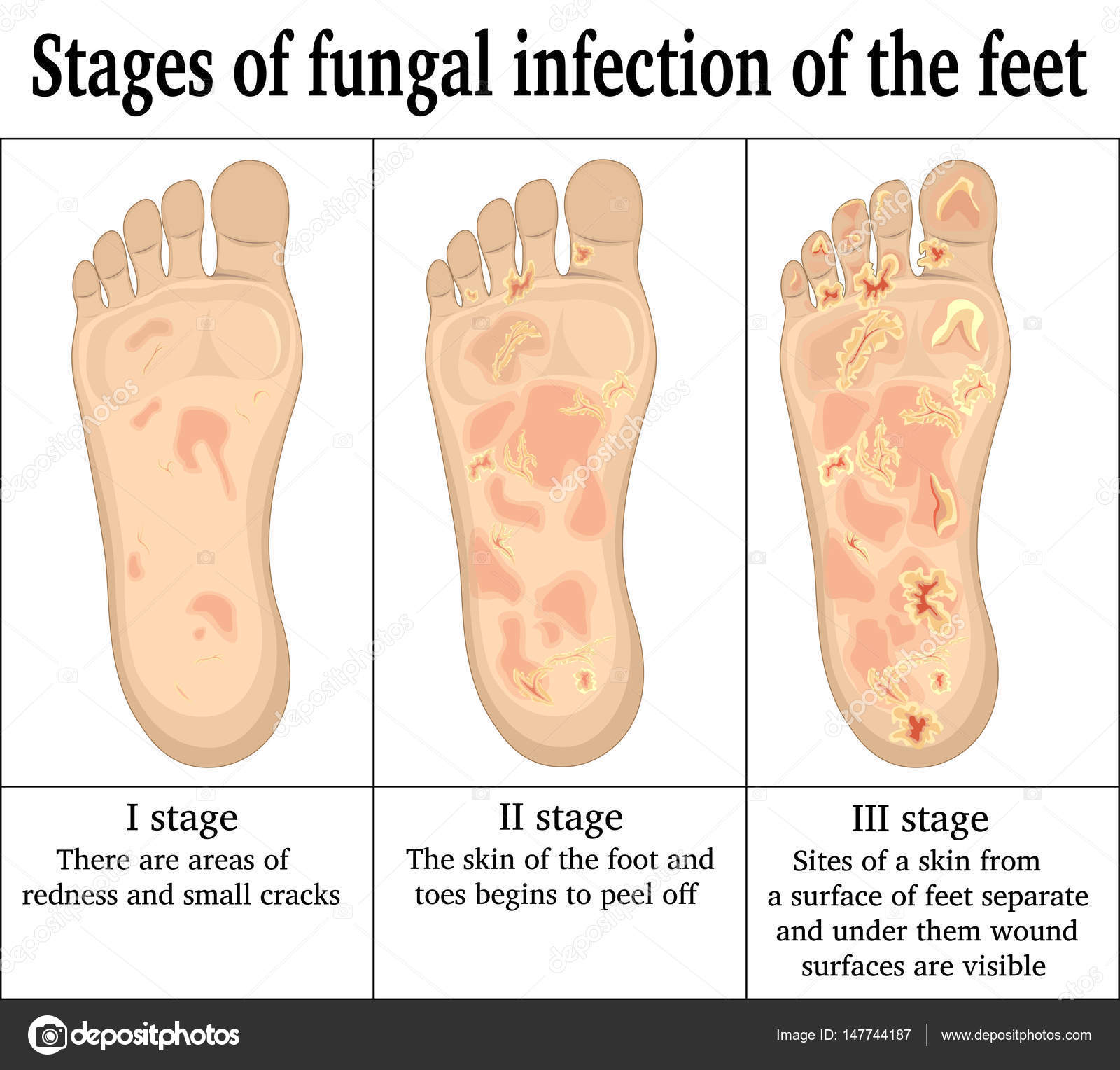 The nail itself may partially lift off the nail bed, or fall off completely.
The nail itself may partially lift off the nail bed, or fall off completely.
Because other infections can affect the nail and mimic symptoms of a fungal nail infection, the only way to confirm a diagnosis is to see a doctor. They’ll take a scraping of the nail and look under a microscope for signs of fungus.
In some cases, your doctor may send the sample to a lab for analysis and identification.
Making a few simple lifestyle changes can help prevent a fungal infection of the nails. Taking good care of your nails by keeping them well trimmed and clean is a good way to prevent infections.
Also avoid injuring the skin around your nails. If you’re going to have damp or wet hands for an extended amount of time, you may want to wear rubber gloves.
Other ways to prevent fungal infections of the nails include:
- washing your hands after touching infected nails
- drying your feet well after showering, especially between your toes
- getting manicures or pedicures from trustworthy salons
- avoiding being barefoot in public places
- reducing your use of artificial nails and nail polish
Products to help you avoid nail fungus
If you’re prone to excessive moisture around your fingernails or toenails, consider buying:
- antifungal sprays or powders
- moisture-wicking socks
- your own manicure or pedicure set
For some people, a fungal nail infection can be difficult to cure, and the first round of medication might not work. The nail infection can’t be considered cured until a new nail that’s free from infection has grown in.
The nail infection can’t be considered cured until a new nail that’s free from infection has grown in.
Although this indicates that the nail is no longer infected, it’s possible for the fungal infection to return. In severe cases, there may be permanent damage to your nail, and it may have to be removed.
The main complications of a fungal nail infection are:
- a resurgence of the infection
- a permanent loss of the affected nail
- a discoloration of the infected nail
- the spread of infection to other areas of the body and possibly the bloodstream
- the development of a bacterial skin infection called cellulitis
It’s especially important to see your doctor if you have diabetes and a fungal nail infection. People with diabetes have a greater risk for developing potentially serious complications caused by these infections. Talk to your doctor if you have diabetes and think you’re developing a fungal nail infection.
Fungal Nail Infection: Overview, Causes & Treatments
We include products we think are useful for our readers. If you buy through links on this page, we may earn a small commission Here’s our process.
If you buy through links on this page, we may earn a small commission Here’s our process.
Healthline only shows you brands and products that we stand behind.
Our team thoroughly researches and evaluates the recommendations we make on our site. To establish that the product manufacturers addressed safety and efficacy standards, we:
- Evaluate ingredients and composition: Do they have the potential to cause harm?
- Fact-check all health claims: Do they align with the current body of scientific evidence?
- Assess the brand: Does it operate with integrity and adhere to industry best practices?
We do the research so you can find trusted products for your health and wellness.
Read more about our vetting process.
Was this helpful?
Fungal nail infections are common and are caused by fungi that live in the environment. They enter through small cracks in your nail or the nearby skin, causing infection.
Fungal infections can affect any part of the body. Fungi are normally present in and on the body alongside various bacteria. But when a fungus begins to overgrow, you can get an infection.
Fungi are normally present in and on the body alongside various bacteria. But when a fungus begins to overgrow, you can get an infection.
Onychomycosis, also called tinea unguium, is a fungal infection that affects either the fingernails or toenails. Fungal infections normally develop over time, so any immediate difference in the way your nail looks or feels may be too subtle to notice at first.
A fungal nail infection occurs from the overgrowth of fungi in, under, or on the nail. Fungi thrive in warm, moist environments, so this type of environment can cause them to naturally overpopulate. The same fungi that cause jock itch, athlete’s foot, and ringworm can cause nail infections.
Fungi that are already present in or on your body can cause nail infections. If you have come in contact with someone else who has a fungal infection, you may have contracted it as well. Fungal infections affect toenails more commonly than fingernails, likely because your toes are usually confined to shoes, where they’re in a warm, moist environment.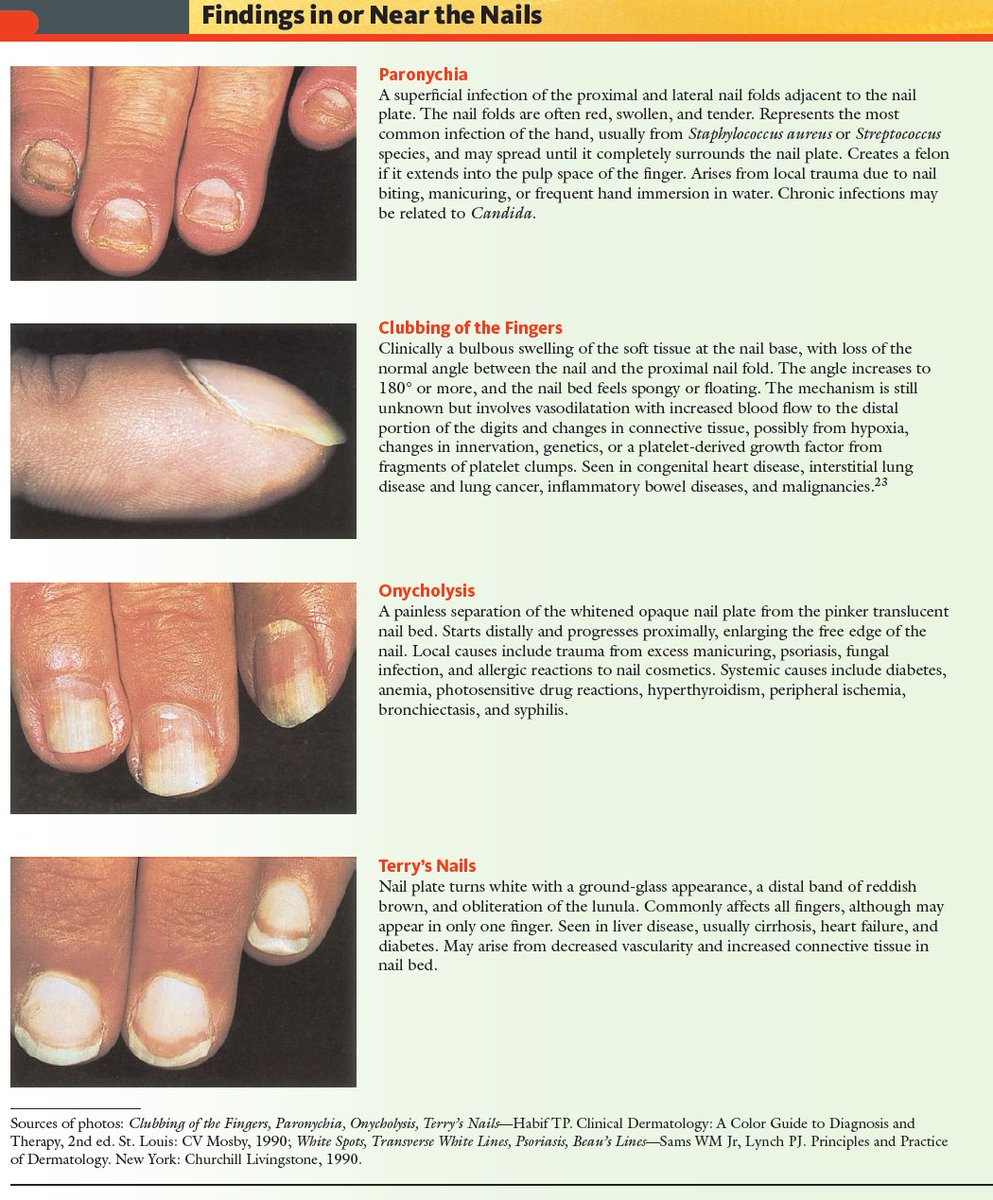
If you get a manicure or pedicure at a nail salon, be sure to ask how the staff disinfects their tools and how often they do it. Tools, such as emery boards and nail clippers, can spread fungal infections from person to person if they’re not sanitized.
There are many different causes of fungal nail infections. Each cause has a treatment of its own. Although many of the causes of a fungal nail infection are preventable, some risk factors increase the likelihood of developing one. You’re more likely to develop a fungal nail infection if you:
- have diabetes
- have a disease that causes poor circulation
- are over age 65
- wear artificial nails
- swim in a public swimming pool
- have a nail injury
- have a skin injury around the nail
- have moist fingers or toes for an extended time
- have a weakened immune system
- wear closed-toe shoes, such as tennis shoes or boots
Nail infections occur more often in men than in women, and the infections are found in adults more often than in children. If you have family members who often get these types of fungal infections, you’re more likely to get them as well.
If you have family members who often get these types of fungal infections, you’re more likely to get them as well.
Older adults have a high risk for getting fungal nail infections because they have poorer circulation. The nails also grow more slowly and thicken as we age.
A fungal infection of the nail may affect part of the nail, the entire nail, or several nails.
Common signs of a fungal nail infection include:
- a distorted nail that may lift off from the nail bed
- an odor coming from the infected nail
- a brittle or thickened nail
Distal subungual infection
Distal subungual infections are the most common type of fungal nail infection and can develop in both fingernails and toenails. When infected, the outer edge of the nail has a jagged appearance with white and/or yellow streaks across the nail.
The infection invades the nail bed and underside of the nail.
White superficial infection
White superficial infections usually affect toenails. A certain type of fungus attacks the top layers of the nail and creates well-defined white spots on the nail.
A certain type of fungus attacks the top layers of the nail and creates well-defined white spots on the nail.
Eventually these white patches cover the entire nail, which becomes rough, soft, and prone to crumbling. Spots on nail may become pitted and flaky.
Proximal subungual infection
Proximal subungual infections are uncommon but can affect both fingernails and toenails. Yellow spots appear at the base of the nail as the infection spreads upward.
This infection can commonly occur in people with compromised immune systems. It can also result from minor injury to the nail.
Candida infection
Candida yeasts cause this type of infection. It can invade nails previously damaged by a prior infection or injury. More commonly, Candida affects fingernails. It often occurs in people who frequently soak their hands in water.
These infections usually start by the cuticle around the nail, which becomes swollen, red, and tender to the touch.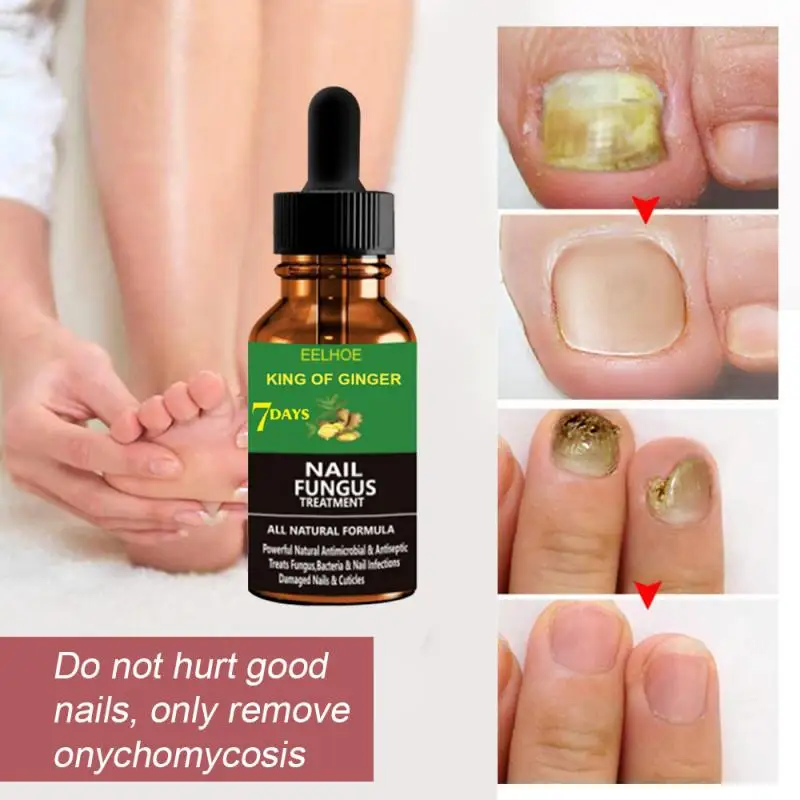 The nail itself may partially lift off the nail bed, or fall off completely.
The nail itself may partially lift off the nail bed, or fall off completely.
Because other infections can affect the nail and mimic symptoms of a fungal nail infection, the only way to confirm a diagnosis is to see a doctor. They’ll take a scraping of the nail and look under a microscope for signs of fungus.
In some cases, your doctor may send the sample to a lab for analysis and identification.
Making a few simple lifestyle changes can help prevent a fungal infection of the nails. Taking good care of your nails by keeping them well trimmed and clean is a good way to prevent infections.
Also avoid injuring the skin around your nails. If you’re going to have damp or wet hands for an extended amount of time, you may want to wear rubber gloves.
Other ways to prevent fungal infections of the nails include:
- washing your hands after touching infected nails
- drying your feet well after showering, especially between your toes
- getting manicures or pedicures from trustworthy salons
- avoiding being barefoot in public places
- reducing your use of artificial nails and nail polish
Products to help you avoid nail fungus
If you’re prone to excessive moisture around your fingernails or toenails, consider buying:
- antifungal sprays or powders
- moisture-wicking socks
- your own manicure or pedicure set
For some people, a fungal nail infection can be difficult to cure, and the first round of medication might not work.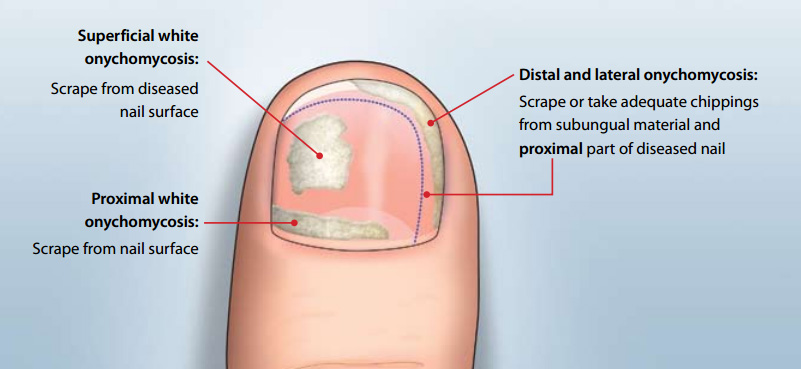 The nail infection can’t be considered cured until a new nail that’s free from infection has grown in.
The nail infection can’t be considered cured until a new nail that’s free from infection has grown in.
Although this indicates that the nail is no longer infected, it’s possible for the fungal infection to return. In severe cases, there may be permanent damage to your nail, and it may have to be removed.
The main complications of a fungal nail infection are:
- a resurgence of the infection
- a permanent loss of the affected nail
- a discoloration of the infected nail
- the spread of infection to other areas of the body and possibly the bloodstream
- the development of a bacterial skin infection called cellulitis
It’s especially important to see your doctor if you have diabetes and a fungal nail infection. People with diabetes have a greater risk for developing potentially serious complications caused by these infections. Talk to your doctor if you have diabetes and think you’re developing a fungal nail infection.
signs, types, causes, prevention, diagnosis, complications and treatment methods in “SM-Clinic”
This disease is treated by a Dermatologist
, Mycologist
- About disease
- Types of nail fungus
- Symptoms of nail fungus
- Causes of nail fungus
- Diagnosis of onychomycosis
- Expert opinion
- Treatment of nail fungus
- Prevention of nail fungus
- Rehabilitation
- Questions and answers
About the disease
Onychomycosis is characterized by involvement in the pathological process of one or more nails separately on the hands and feet, or mixed variants. The pathological process can manifest at any time of the year, however, climatic conditions impose a certain imprint on the prevalence of onychomycosis of toenails. In northern countries, it occurs more often due to the need to wear closed and tight warm shoes for a long time.
The pathological process can manifest at any time of the year, however, climatic conditions impose a certain imprint on the prevalence of onychomycosis of toenails. In northern countries, it occurs more often due to the need to wear closed and tight warm shoes for a long time.
In Russia, men are at risk for developing fungal infections of the legs, although they are 1.5 times less likely than women to go to the doctor. In women, onychomycosis appears more often among those who wear pointed-toe high-heeled shoes. This is due to the constant flattening and friction of the fingers, which leads to the appearance of microcracks on them, through which microbes actively penetrate.
Types of nail fungus
Modern dermatology uses two working classifications of onychomycosis:
- depending on the location of the pathological process;
- by the presence of morphological changes in the nail plate.
Depending on the location of the lesion, several forms of pathology are distinguished.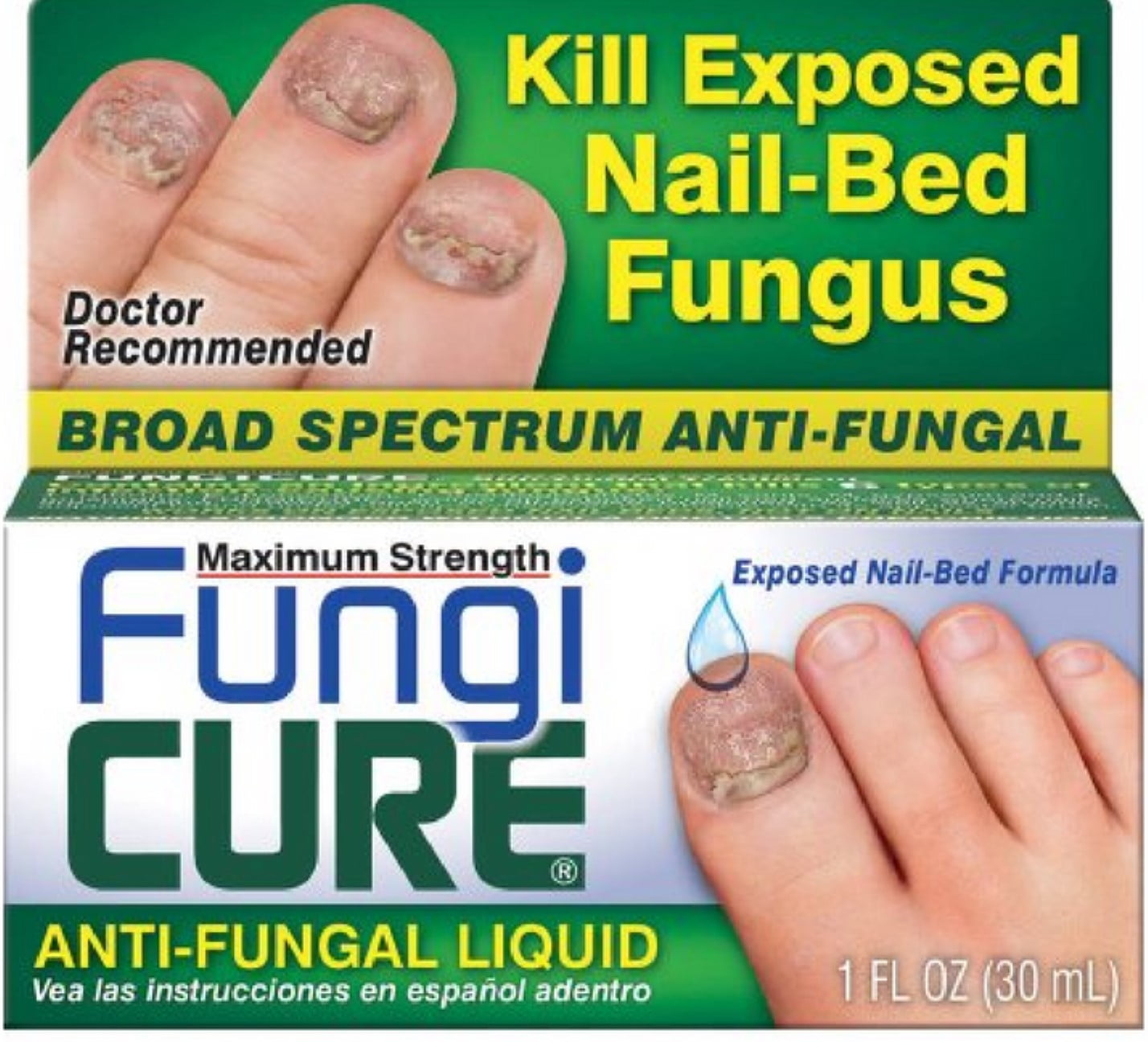
- Surface. The horn plate is practically not changed. Small inclusions appear on its surface, visually resembling scattered powder.
- Lateral. The pathological process develops from one or both sides of the nail plate.
- Proximal. The lesion affects the part of the nail located at the base of the hole.
- Distal. Damage to the nail plate begins with its free edge.
- Disto-lateral. Simultaneous damage to the nail, periungual space and subungual space.
- Total. The pathological process affects the entire surface of the horny plate.
In the classification of nail fungus according to morphological changes in the nail plate, there are three varieties.
- Normotrophic. The natural thickness and shape of the nail is preserved. Small pathological changes concern only the color of the nail plate. In its lateral sections, instead of a uniform skin tone, whitish lines and blotches are clearly visible.
- Hyperkeratotic.
 The nail plate thickens, becomes brittle and dull. Deep furrows appear on its surface, the edges are dotted with notches, and pain occurs when walking.
The nail plate thickens, becomes brittle and dull. Deep furrows appear on its surface, the edges are dotted with notches, and pain occurs when walking. - Atrophic. Signs of dystrophy appear on the nail, the horny plate becomes brown in color and exfoliates from the bed.
Symptoms of nail fungus
From the moment of infection with nail fungus to the first signs of the disease, it can take from two to three weeks to several months. The first symptoms of onychomycosis are the loss of a glossy shine on the nail plate. It becomes rough and dull. After a while, the color of the nail becomes gray, whitish or dirty yellow instead of pink, and then other signs characteristic of nail fungus appear:
- increases the thickness of the stratum corneum;
- plate delamination and crumbling begins;
- an unpleasant odor appears;
- nail defects are formed in the form of waves, irregularities, bends, stripes.
The result of the pathological process is the complete destruction and exfoliation of the nail. The nail bed is exposed, and the nearby skin becomes red and itchy.
The nail bed is exposed, and the nearby skin becomes red and itchy.
Causes of nail fungus
The main cause of nail mycosis is infection with pathogenic fungi. They multiply on the nail plates, which they use for their nutrition. The greatest risk of infection in people who do not follow the rules of personal hygiene when visiting public places with high humidity: baths, swimming pools, saunas, etc. There are several ways of transmitting a fungal infection.
- Direct contact. The fungus gets from the nail plates of an infected person to the skin of a healthy person during a handshake.
- Household way. Infection occurs when using the personal belongings of an infected person, such as shoes or a towel.
The fungus can also be transmitted by:
- touching infected surfaces: shelves in a sauna or bath, bath mats;
- walking barefoot in nature;
- during the pedicure procedure if the master used a poorly disinfected instrument, etc.

Among the common causes that increase the risk of developing onychomycosis, podologists distinguish:
- uncontrolled intake of antidepressants, corticosteroid hormones, antibiotics;
- allergic skin lesions (weeping, inflammation, itching).
Risk factors include:
- psoriasis;
- obesity;
- flat feet;
- diabetes mellitus;
- immunodeficiencies;
- wearing tight shoes;
- excessive sweating.
Get advice
If you experience these symptoms, we recommend that you make an appointment with your doctor. Timely consultation will prevent negative consequences for your health.
You can find out more about the disease, prices for treatment and sign up for a consultation with a specialist by calling:
+7 (495) 292-39-72
Request a call back
Book online
Why SM-Clinic?
1
Treatment is carried out in accordance with clinical guidelines
2
Comprehensive assessment of the nature of the disease and treatment prognosis
3
Modern diagnostic equipment and own laboratory
9000 2 4
High level of service and balanced pricing policy
Diagnosis of onychomycosis
Preliminary diagnosis is made on the basis of clinical manifestations and anamnesis. An experienced podologist immediately sees the lesions of the nail plate characteristic of the fungus. To confirm and clarify the diagnosis, a number of specific tests are used.
An experienced podologist immediately sees the lesions of the nail plate characteristic of the fungus. To confirm and clarify the diagnosis, a number of specific tests are used.
- Luminescent diagnostics: examination of the affected area under the rays of a Wood’s lamp.
- Examination of scrapings from a fungal lesion under a high-precision microscope, which allows examination of tissues at the cellular level.
Differential diagnosis of nail fungus requires distinguishing onychomycosis from eczema, psoriasis, cancer and other pathologies with similar symptoms. If necessary, other specialists are involved in the examination.
Expert opinion
Onychomycosis is a very delicate problem. Many people are embarrassed to seek help, they experience severe psychological discomfort and try to hide the affected nails from others. The dangerous consequences of onychomycosis include:
- reduced immunity;
- exacerbation of chronic diseases present in the body;
- spread of infection to neighboring nails and adjacent skin.

Another serious complication of untreated nail fungus is its transition to a chronic form. In this case, it will take a lot of time and effort to get rid of the pathology. In order to eliminate the problem as soon as possible, you need to contact a specialist at the first signs of pathology. Only an experienced doctor will make the correct diagnosis and prescribe a full-fledged treatment that will lead to a full recovery.
Shchepleva Natalya Petrovna
Dermatologist, venereologist, mycologist, cosmetologist, trichologist, podologist
Treatment of nail fungus
Onychomycosis is difficult to treat because of the ability of the fungus to penetrate deep into the nail plate. The treatment course takes a lot of time, especially if the patient does not follow the recommendations clearly enough. The main treatment options for onychomycosis, allowing to achieve a stable remission or complete recovery, are:
- conservative therapy;
- nail removal operation.

Conservative treatment
The gold standard for treating onychomycosis is to take topical antifungals prescribed by your doctor. It can be ointments, varnishes, special gels. With extensive damage, systemic drugs may be required. In the absence of the effect of such therapy or the advanced stage of nail fungus, surgery is required.
Surgical treatment of nail fungus
Surgical intervention consists in the removal of a nail affected by a fungus. The operation includes 2 consecutive stages.
- Removal of the nail plate under local anesthesia.
- Cleansing of the nail bed and growth zone from the fungus.
The operation can be performed in several ways.
- Mechanical. A nail with a fungus is partially or completely excised with surgical instruments.
- Physical. For layer-by-layer or complete removal of the affected areas of the nail plate, a laser, photodynamic therapy, electric knife, ultraviolet irradiation, etc.
 are used.
are used. - Hardware. The nail bed is treated with rotating files, the abrasive elements of which gently, without pain, clean off the infected fragments of the stratum corneum.
Prevention of nail fungus
Since onychomycosis thrives best in a warm and humid environment, to prevent nail fungus and its consequences:
- give up tight shoes;
- do not wear other people’s slippers and slates;
- give preference to highly absorbent socks;
- do not walk barefoot in public places with high humidity;
- carry out regular cleaning of the inner surfaces of shoes with disinfectants.
Secondary prevention of mycosis of the nails is aimed at preventing the recurrence of the disease. It is carried out using drugs prescribed by the attending physician. They must be taken in strict accordance with the recommended dosage.
Rehabilitation
Regardless of the method of removing the nail plate, to prevent the recurrence of the disease, the remaining wound must be properly cared for:
- do daily dressings;
- prevent the dressing from getting wet and dirty.

If the removal of the nail plate is carried out on the leg, strict bed rest must be observed in the first days. In the next 2-3 weeks, until the wound is completely healed, it is recommended not to wear shoes. Walking should be in clean socks made of natural, well-ventilated fabric, trying not to burden the leg.
Questions and answers
This term refers to a dermatological disease caused by pathogenic fungi that affects the nail and the skin around it.
Yes. This method of treatment is used very often, because people do not rush to the doctor at the first sign of pathology, when it lends itself well to conservative therapy.
Tsykin A. A., Ivanov O. L., Lomonosov K. M. On the treatment of onychomycosis // Almanac of Clinical Medicine. 2007. No. 15.
Tsykin A. A., Ivanov O. L., Lomonosov K. M. On the diagnosis of onychomycosis // Almanac of Clinical Medicine. 2007. No. 15.
Kornisheva Vera Gavrilovna, Shepilo S. A. Laser therapy of onychomycosis (review) // Problems of medical mycology. 2017. №3.
A. Laser therapy of onychomycosis (review) // Problems of medical mycology. 2017. №3.
Lykova S., Nemchaninova O., Spitsyna A. ONYCHOMYCOSIS: TREATMENT AND PREVENTION // Vrach. 2016. №3.
Burova S.A., Privolnev V.V. Onychomycosis: the view of a dermatologist and surgeon // Wounds and wound infections. Journal named after Professor B. M. Kostyuchenko. 2015. №2.
>
Diseases referred to Dermatologist
Acne (pimples)
Allergic dermatitis
Atopic dermatitis
Warts
Human papillomavirus (HPV)
Ingrown toenail (onychocryptosis)
Herpes (herpes virus 1, 2 types)
Hyperhidrosis (sweating)
Foot hyperhidrosis (excessive sweating)
Hyperkeratosis
Hyperkeratosis of the nails
foot fungus
demodicosis
Dermatitis
Nail deformation
diabetic foot
Ichthyosis
Keratoma
warts
molluscum contagiosum
contact dermatitis
Hives
Couperose
Lichen
calluses
corns
Nevuses (moles)
Neurodermatitis
Onychodystrophy
Onycholysis
Rash under the breast
Pityriasis versicolor
Papillomas
Inguinal epidermophytosis
Pediculosis
Skin pigmentation
plantar warts
Loss of skin tone and elasticity
Prickly heat
Psoriasis
Pemphigus
Rosacea
Seborrheic dermatitis
seborrhea
Cracked feet
Acne
Folliculitis
Furuncle (boil)
Furunculosis
Scabies
Eczema
Diseases referred to Mycologist
Ingrown nail (onychocryptosis)
Foot hyperhidrosis (excessive sweating)
Hyperkeratosis of the nails
foot fungus
Nail deformation
Onychodystrophy
Inguinal epidermophytosis
Cracked feet
All doctors
VDNH metro station
Belorusskaya metro station
Molodyozhnaya metro station
Voikovskaya metro station
st. Cosmonaut Volkova d. 9/2
Cosmonaut Volkova d. 9/2
Staropetrovsky proezd, 7A, building 22
st. Clara Zetkin, 33 bldg. 28
Tekstilshchiki metro station
Kurskaya metro station
Sevastopolskaya metro station
Chertanovskaya metro station
Krylatskoe metro station
Baltiyskaya metro station
9 0002 Staropetrovsky proezd, 7A, building 22
st. Clara Zetkin, 33 bldg. 28
Marina Roshcha
Novye Cheryomushki
Vodny Stadium
Ulitsa 1905 Goda
Yugo-Zapadnaya
m. Sukharevskaya
All doctors
Loading
Licenses
Go to the license sectionGo to the legal information section
symptoms, causes, diagnosis, treatment| JSC “Medicina” (clinic of Academician Roitberg)
Content of the article
- Causes of onychomycosis
- Classification of pathology
- Symptoms of onychomycosis
- Disease diagnosis
- Treatment of onychomycosis
- Preventive measures
- Questions and answers
- Sources
Onychomycosis is a pathological process that develops as a result of infection of the nail plates on the hands and feet of a person with fungal pathogens. Symptoms of the disease depend on the type of microflora. Mycoses lead to a change in the color, texture and transparency of the nails. The skin adjacent to the nail plates may remain unchanged or redden and swell due to infection with secondary microflora. Treatment of onychomycosis is carried out under the supervision of a dermatologist.
Symptoms of the disease depend on the type of microflora. Mycoses lead to a change in the color, texture and transparency of the nails. The skin adjacent to the nail plates may remain unchanged or redden and swell due to infection with secondary microflora. Treatment of onychomycosis is carried out under the supervision of a dermatologist.
Causes of development of onychomycosis
Nail fungus is a consequence of the activity of pathogenic or opportunistic fungi. Favorable conditions for the life of the microflora are injuries to the feet or fingers, increased sweating, and non-compliance by the patient with the rules of personal hygiene. Often, infection occurs against the background of taking hormonal drugs, endocrine and immunological diseases, flat feet, varicose veins, etc. A healthy person may experience onychomycosis when wearing improperly selected shoes for a long time.
Damage to nails by pathogenic microflora does not occur immediately. For some time, pathogens are located on the skin of a child or adult. The contact of pathogens on the skin is the result of contact of a healthy person with an infected person. The transfer of microflora is possible with a handshake, touch, use of common household items.
For some time, pathogens are located on the skin of a child or adult. The contact of pathogens on the skin is the result of contact of a healthy person with an infected person. The transfer of microflora is possible with a handshake, touch, use of common household items.
After colonization of the skin, the fungus penetrates under the free edge of the nail plate and rushes into the stratum corneum. Pathogens form an extensive network of passages inside the nails. The degree of damage to the horny plates of the hands and feet depends on the activity of the microflora and the person’s compliance with the rules of personal hygiene.
Classification of pathology
Dermatologists use two typologies of onychomycosis. The first is based on morphological changes in the nail plates under the influence of microflora, the second is based on the localization of the pathological process. After examining patients, doctors enter into an anamnesis detailed information about the identified form of the disease.
Morphological approach allows us to distinguish three forms of nail mycosis:
- normotrophic — the nail retains its natural size and shape, color changes slightly — whitish blotches appear in the lateral sections;
- hyperkeratotic – the horny plate becomes dull, subungual hyperkeratosis develops, the patient experiences pain when bending the fingers or toes;
- atrophic – the nail becomes brown and peels off from the nail bed.
When studying the localization of the pathological process, a dermatologist can detect the following forms of onychomycosis in a patient:
- superficial – the nail retains its shape, white blotches appear on its surface;
- distal – destructive changes affect the free edge of the nail plate;
- lateral – pathogenic microflora is located on the lateral surface of the nail;
- proximal – the fungus affects the base of the stratum corneum;
- total – changes affect the entire surface of the nail;
- distal-lateral – not only the nail plate is infected, but also the subungual space and periungual space.

In the process of diagnosis, doctors determine the type of pathogenic microflora found in a patient. Mycoses are caused by dermatophyte, candidal and mold infectious agents.
Symptoms of onychomycosis
The main symptom of onychomycosis is a visual change in the nail plates on the hands and feet of a child or adult. The clinical symptoms of the disease include fungal infections of the palms and feet, cracking and peeling of the skin. White or yellow spots appear on the outer surface of the nail, the plate loses its transparency. Often the pathological process is complicated by hyperkeratotic thickening. The horny plate loses elasticity, becomes brittle. In advanced cases, pathology can lead to onycholysis (separation of the nail from the bed), atrophy of the stratum corneum and subungual dermis.
Diagnosis of the disease
The diagnosis is made by a dermatologist. The doctor examines the patient’s nails and skin with a fluorescent lamp – pathogens begin to glow brightly under the influence of ultraviolet rays.
The type of fungal microflora is determined by microscopy of scrapings from the nail plate and placement of the biomaterial in a nutrient medium. If signs of malignant degeneration of tissues are detected, the doctor will refer the patient for a biopsy for a histological examination.
Differential diagnosis allows excluding psoriasis, lichen planus, keratoderma, eczema and other diseases from the patient’s history.
Treatment of onychomycosis
The treatment of onychomycosis is determined by the doctor based on the clinical picture and the results of laboratory tests. Dermatologists use the KIOTOS index (SCIO in the WHO version), which describes therapeutic measures for each type of pathology, taking into account the localization of primary lesions and the degree of hyperkeratotic changes in the nail plates.
In case of superficial nail damage, the patient is prescribed local therapy – antimycotic and keratolytic varnishes, creams or patches. With partial detachment of the nail plate, combined therapy is used, which includes topical preparations and agents aimed at treating the primary pathology – foot hyperhidrosis, varicose veins, endocrine diseases.
With partial detachment of the nail plate, combined therapy is used, which includes topical preparations and agents aimed at treating the primary pathology – foot hyperhidrosis, varicose veins, endocrine diseases.
Complete damage to the nail is considered by doctors as an indication for the removal of the stratum corneum and sanitation of the nail bed. After the operation, the patient should apply antiseptic and antimycotic ointments. As the new nail grows, gelatin solutions and mixtures based on vitamins and minerals are applied to the bed. In some cases, physiotherapy procedures are prescribed for adults and children.
Preventive measures
Dermatologists distinguish between primary and secondary prevention of nail fungus. Primary preventive measures are aimed at preventing infection of patients. Children and adults are advised to follow the rules of personal hygiene, carefully trim their fingernails and toenails, avoid injuries, use prophylactic antifungal agents when visiting pools, saunas or baths.
Secondary prevention is based on strict adherence by the patient to the recommendations of the dermatologist. Persons undergoing treatment for onychomycosis should choose comfortable shoes, use socks made from natural fabrics, apply antibacterial deodorants to sneakers or boots, and regularly use antifungal varnishes.
Questions and Answers
- Which doctor treats nail fungus?
- Diagnosis of pathology and development of a course of treatment is carried out by a dermatologist. The patient may need additional consultations with an endocrinologist, gastroenterologist and other doctors.
- Is it possible to transmit onychomycosis from a carrier to a healthy person through household items?
- Contagious infection remains the most common mode of pathogen transmission. Relatives of a patient undergoing treatment against the background of diagnosed onychomycosis should regularly disinfect common areas, bathrooms and latrines.


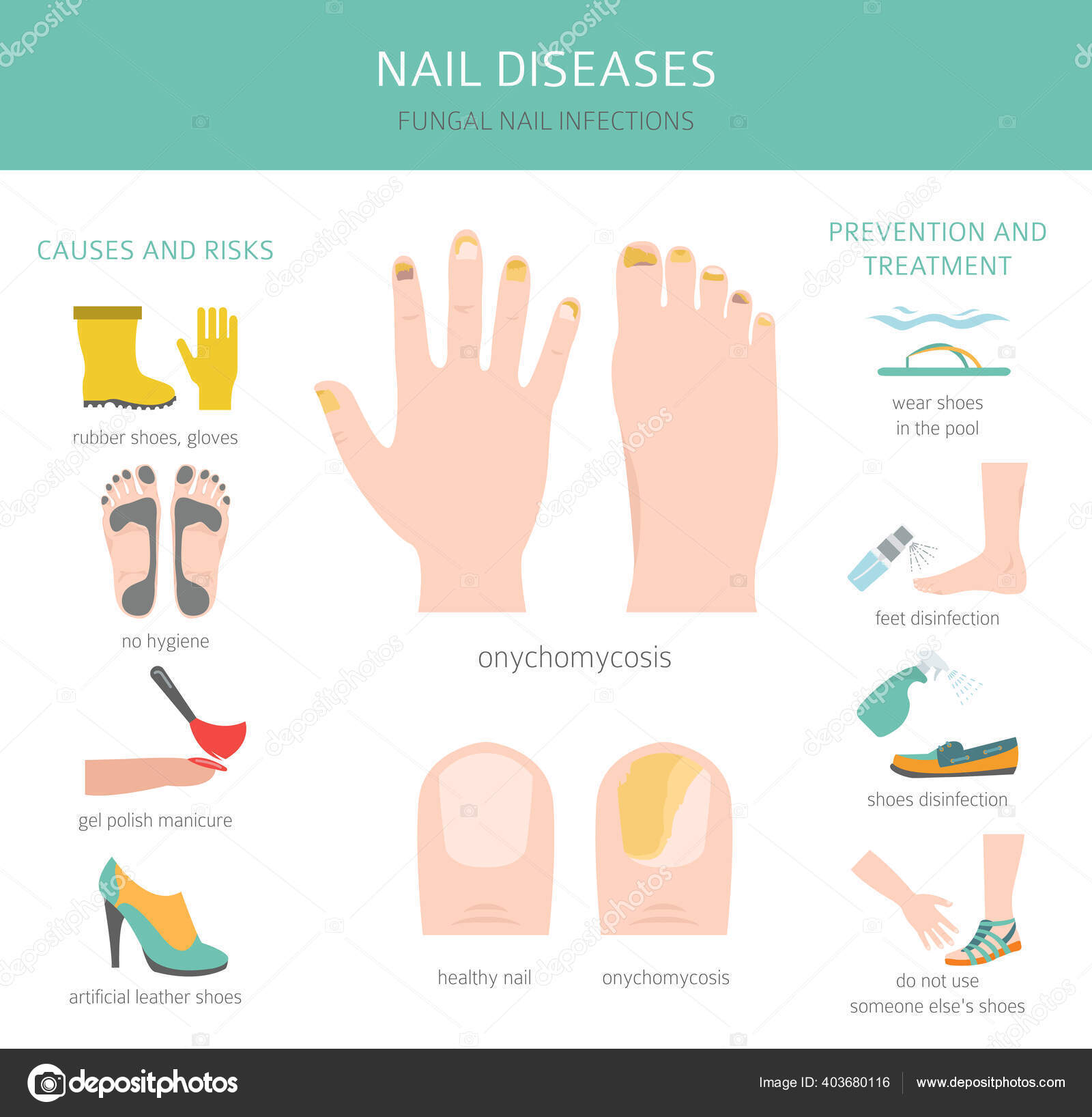 The nail plate thickens, becomes brittle and dull. Deep furrows appear on its surface, the edges are dotted with notches, and pain occurs when walking.
The nail plate thickens, becomes brittle and dull. Deep furrows appear on its surface, the edges are dotted with notches, and pain occurs when walking.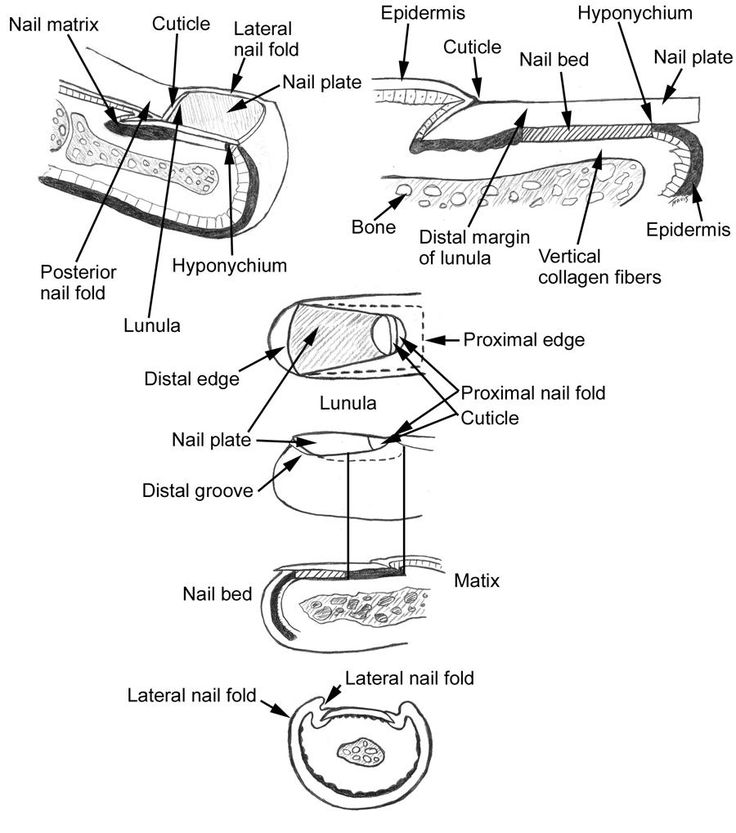

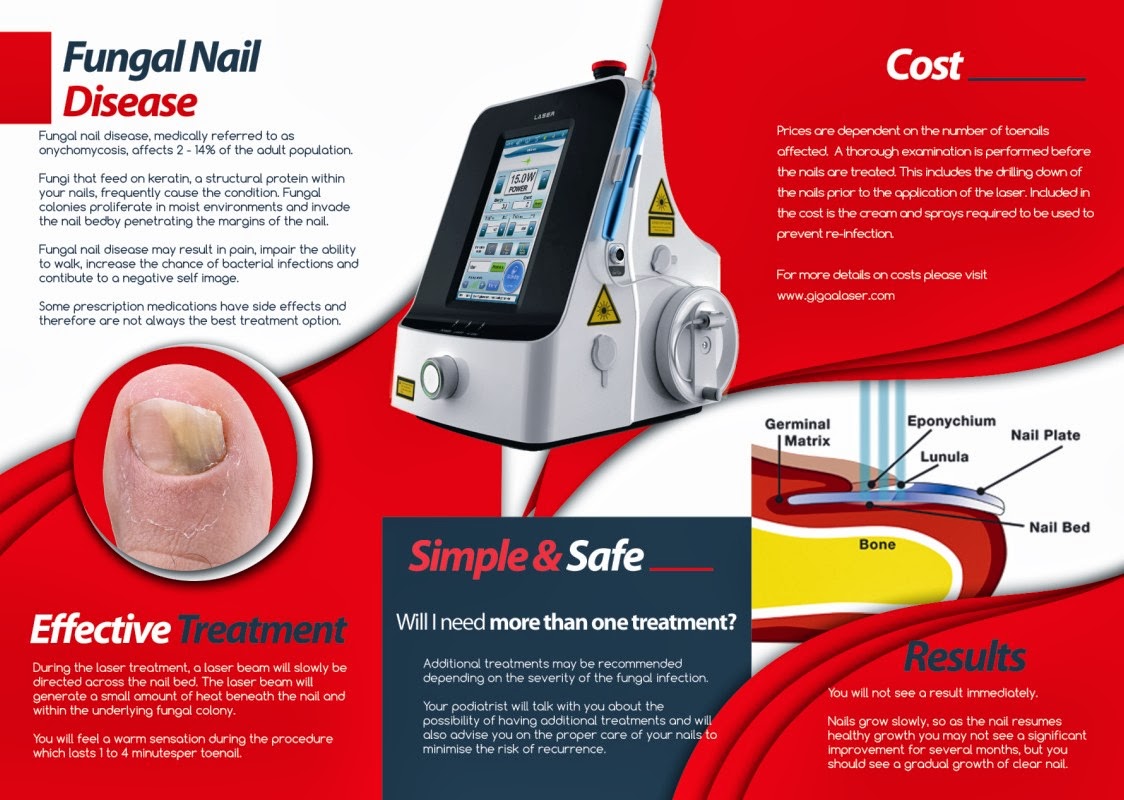
 are used.
are used.

